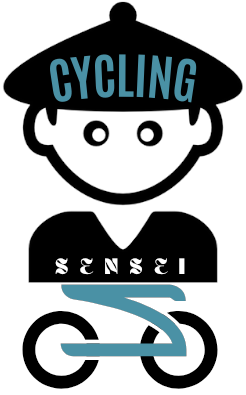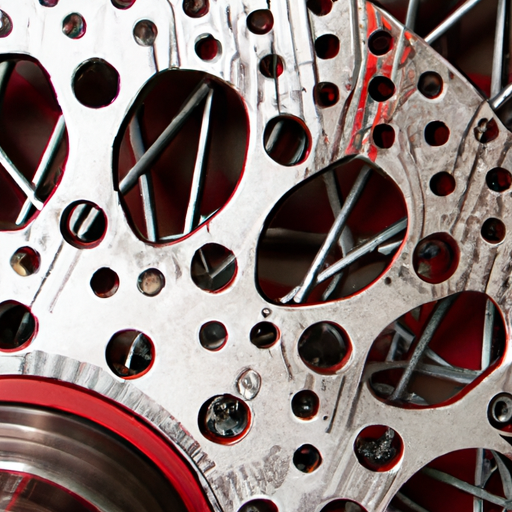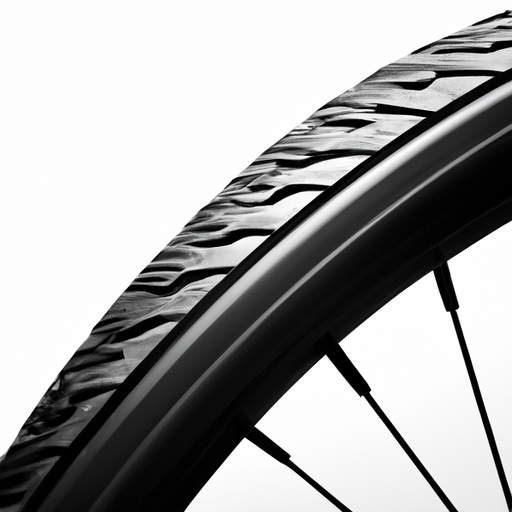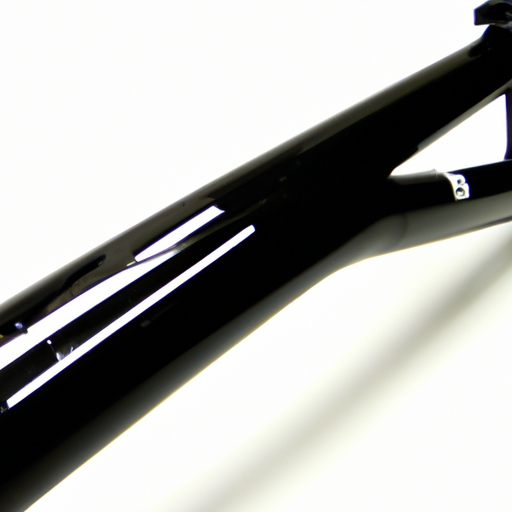Can I Upgrade My Bike’s Components (e.g., Brakes, Drivetrain)?
Thinking about upgrading your bike’s components? If you’ve ever wondered if it’s possible to enhance your biking experience by upgrading parts such as brakes or drivetrain, the answer is a resounding yes! Upgrading your bike’s components can not only improve its performance and reliability, but it can also give you a smoother and more enjoyable ride. In this article, we will explore the benefits of upgrading your bike’s components and provide some guidance on how to go about it. So get ready to take your biking adventures to the next level! Yes, you definitely can upgrade your bike’s components! Upgrading certain parts of your bike can greatly improve its performance and overall riding experience. Whether you’re looking to enhance your bike’s braking system, drivetrain, wheels and tires, handlebars and stem, saddle, pedals, forks, suspension, shifters, or crankset, there are plenty of options available to suit your specific needs and preferences. In this article, we’ll explore each of these components in detail and discuss the considerations and steps involved in upgrading them.
Brakes
When it comes to bike brakes, there are several types to choose from. The most common types include rim brakes, disc brakes, and drum brakes. Rim brakes exert friction on the rim of the wheel to slow down or stop the bike, while disc brakes use a rotor and caliper system for superior stopping power. Drum brakes, on the other hand, are typically found on older or specialized bikes and work by applying pressure to the inside of a drum attached to the wheel.
If you’re considering upgrading your bike’s brakes, there are a few things to keep in mind. First, determine what type of brakes your bike currently has and whether an upgrade is necessary or desired. If you’re looking for improved stopping power, especially in wet or muddy conditions, upgrading to disc brakes may be a good option. Additionally, consider the compatibility of the brakes with your bike’s frame and fork. Some frames and forks are designed specifically for certain types of brakes, so it’s important to ensure compatibility before making a purchase.
To upgrade your bike brakes, start by researching and selecting the desired brake system based on your needs and preferences. Next, gather the necessary tools and components for the installation. This may include new brake calipers, brake pads, rotors, cables, and housing. If you’re unfamiliar with the installation process, it’s recommended to seek assistance from a professional bike mechanic. They can ensure the brakes are installed correctly and that they function safely and efficiently.
Drivetrain
The drivetrain is an essential component of any bike, responsible for transferring power from the rider to the wheels. It consists of several components, including the chain, cassette or freewheel, chainrings, front and rear derailleurs, and shifters. Upgrading certain parts of the drivetrain can greatly improve the efficiency and functionality of your bike.
Before considering an upgrade to your bike’s drivetrain, it’s important to understand how it works and the different options available. The drivetrain typically consists of a chain that runs along the chainrings (attached to the crankset) and the cassette or freewheel at the rear wheel. The front and rear derailleurs work together to guide the chain onto the desired chainring and cassette/freewheel respectively, allowing you to shift gears.
If you’re looking to upgrade your bike’s drivetrain, there are a few components to consider. Upgrading the chain and cassette/freewheel can improve shifting performance and overall smoothness. Additionally, upgrading the crankset and chainrings can provide better power transfer and allow for a wider range of gear options. The derailleurs and shifters can also be upgraded for more precise and reliable shifting.
When deciding whether to upgrade your bike’s drivetrain, consider factors such as your riding style, terrain, and budget. If you frequently ride in hilly areas or are looking for more gear options, upgrading the cassette/freewheel and chainrings may be beneficial. Similarly, if you often experience issues with shifting, upgrading the derailleurs and shifters can greatly improve performance.
To upgrade your bike’s drivetrain, start by determining which specific components you want to upgrade, such as the chain, cassette/freewheel, chainrings, derailleurs, or shifters. Research and select quality components that are compatible with your bike’s frame and existing drivetrain. It’s recommended to consult with a professional bike mechanic for proper installation and adjustment, as drivetrain components require precise alignment and tuning for optimal performance.
Wheels and Tires
The wheels and tires of your bike play a crucial role in your overall riding experience. Upgrading these components can greatly impact your bike’s performance, comfort, and handling. When considering upgrading your bike’s wheels and tires, it’s important to understand the different options available and how they can enhance your riding experience.
Choosing the right wheels and tires for your bike requires considering factors such as terrain, riding style, and personal preference. There are various types of wheels to choose from, including alloy, carbon fiber, and aerodynamic options. Each type has its own advantages and considerations. Alloy wheels, for example, are generally more affordable and durable, while carbon fiber wheels offer lighter weight and enhanced performance.
In terms of tires, there are different tread patterns and widths to consider. Road bikes typically have narrower tires with smoother tread patterns for increased speed and reduced rolling resistance on paved surfaces. Mountain bikes, on the other hand, have wider tires with aggressive tread patterns for better traction on off-road trails. Hybrid and gravel bikes often feature tires that strike a balance between road and off-road capabilities.
To upgrade your bike’s wheels, start by determining your riding style and the type of riding you primarily do. Research the different wheel options available and consider factors such as weight, durability, and aerodynamics. Additionally, ensure that the wheels you choose are compatible with your bike’s frame and brake system.
To upgrade your bike’s tires, consider factors such as terrain, weather conditions, and your preferred riding style. Choose tires with tread patterns and widths that best suit the type of riding you do. Additionally, consider the type of tube (standard or tubeless-ready) and tire pressure that will work best for your needs.
When upgrading either the wheels or tires, it’s recommended to seek assistance from a professional bike mechanic, as proper installation and adjustment are crucial for optimal performance and safety.
Handlebars and Stem
The handlebars and stem of your bike significantly impact your riding position, comfort, and handling. Upgrading these components can provide a more ergonomic and customizable fit, allowing you to ride with greater control and comfort for extended periods.
There are various types of handlebars to consider when upgrading your bike. Drop bars are commonly found on road bikes and provide multiple hand positions and an aerodynamic riding posture. Flat bars are typically seen on mountain bikes and provide a more upright and stable riding position. Other types include riser bars, bullhorn bars, and aero bars, each offering unique advantages depending on your preferred riding style.
In addition to handlebars, the stem connects the handlebars to the fork and plays a role in the overall fit and handling of your bike. Upgrading the stem can allow for adjustments in height, reach, and angle, providing a more personalized riding position.
When considering an upgrade to your bike’s handlebars and stem, it’s important to assess your riding style, comfort preferences, and any specific needs or limitations. Research the different handlebar and stem options available and consult with a professional bike fitter or mechanic for guidance.
To upgrade your bike’s handlebars, start by selecting the type that best suits your riding style and comfort needs. Measure your existing handlebar diameter and ensure compatibility with your bike’s stem. Consider factors such as width, reach, and drop (for drop bars) when selecting the new handlebars.
Upgrading the stem involves selecting the appropriate length, rise, and angle based on your desired riding position. Take into account your preferred reach and height adjustments to achieve the most comfortable and efficient fit.
Always consult with a professional bike mechanic when installing or adjusting handlebars and stems to ensure proper fit, alignment, and torque specifications.
Saddle
Comfort is key when it comes to long rides on your bike, and the saddle (also known as the seat) plays a crucial role in providing support and reducing pressure on sensitive areas. Upgrading your bike’s saddle can greatly improve your overall riding experience by providing a more comfortable and ergonomic fit.
Choosing the right saddle involves considering factors such as your riding style, body anatomy, flexibility, and personal preference. There are various types of saddles, including those designed for road biking, mountain biking, touring, and recreational riding. Each type offers different levels of padding, shape, width, and cutout designs to accommodate a wide range of riders.
To choose the right saddle, start by measuring your sit bone width. This can be done using a specialized saddle measuring tool or by visiting a bike shop that offers saddle fitting services. Once you have your sit bone width measurement, you can narrow down your options based on the appropriate saddle width range.
When selecting a saddle, consider your riding style and the type of riding you do most often. For long-distance rides, a saddle with more padding and a cutout design may provide increased comfort and reduce pressure on sensitive areas. For more aggressive or performance-oriented riding, a saddle with less padding and a narrower profile may provide better support and stability.
To upgrade your bike’s saddle, research different options that align with your measurements and riding needs. It’s recommended to visit a bike shop that offers a saddle fitting service, where you can test various saddles and receive expert advice on the most suitable options for your body and riding style.
Pedals
The type of pedals you use on your bike can greatly impact your efficiency, comfort, and control while riding. Upgrading your bike’s pedals can provide better power transfer, improved pedaling dynamics, and a more secure connection between your feet and the bike.
There are several types of pedals to choose from, each offering unique advantages depending on your riding style and preferences. Platform pedals, also known as flat pedals, provide a large surface area for your feet and are commonly used for casual and recreational riding. Clipless pedals, on the other hand, require the use of compatible cycling shoes with cleats that attach to the pedals. Clipless pedals provide a more secure and efficient power transfer and are popular among road cyclists, mountain bikers, and competitive riders.
When considering an upgrade to your bike’s pedals, it’s important to assess your riding style, preferences, and any specific needs or limitations. Research the different pedal options available and consult with a professional bike fitter or mechanic for advice.
To upgrade your bike’s pedals, start by selecting the type that best suits your riding style and comfort needs. If you’re transitioning from platform pedals to clipless pedals, it’s important to invest in compatible cycling shoes that accommodate the specific cleat system. Choose pedals that are known for their durability, reliability, and smooth engagement/release mechanism.
Always consult with a professional bike mechanic when installing or adjusting pedals to ensure proper fit, alignment, and tightening torque specifications.
Forks
The forks of your bike play a crucial role in suspension and steering, absorbing impacts from the road or trail and ensuring stability and control. Upgrading your bike’s forks can greatly enhance your riding experience, providing smoother suspension, improved handling, and reduced weight.
There are different types of bike forks available, including rigid forks, suspension forks, and rigid suspension-corrected forks. Rigid forks do not have any suspension and are most commonly found on road bikes or fixed-gear bikes. Suspension forks, on the other hand, feature a suspension system with either coil or air springs to absorb shocks and bumps. Rigid suspension-corrected forks are designed for bikes that are intended to have a suspension fork but allow for a rigid fork option.
When considering an upgrade to your bike’s forks, it’s important to assess your riding style, terrain, and personal preferences. Research the different fork options available and consult with a professional bike fitter or mechanic for guidance.
To upgrade your bike’s forks, start by selecting the type of fork that best suits your riding style and the terrain you primarily ride on. Consider factors such as travel (the amount of suspension travel), stiffness, weight, and adjustment features.
Upgrading forks can be a more complex process than other components, as it may involve proper installation, compatibility with your bike’s frame, and adjustments to suspension settings. Always consult with a professional bike mechanic for installation, adjustment, and tuning to ensure optimal performance and safety.
Suspension
The suspension components of your bike, including forks and rear shocks, have a significant impact on ride quality, comfort, and handling, especially when riding on rough and challenging terrain. Upgrading these components can improve overall suspension performance, increase control, and enhance your riding experience.
There are different types of suspension systems available, including coil shocks and air shocks. Coil shocks use a metal spring to absorb impacts and provide suspension, while air shocks use compressed air for suspension. Each type offers different advantages and considerations depending on your riding style, weight, and preferences.
To determine whether upgrading your bike’s suspension components is necessary, consider factors such as your riding style, the terrain you ride on, and the current performance of your suspension. If you frequently encounter rough trails or desire a more responsive suspension, upgrading your shocks may be beneficial.
When considering an upgrade to your bike’s suspension components, it’s important to assess your riding style, terrain, and personal preferences. Research the different suspension options available and consult with a professional bike fitter or mechanic for guidance.
To upgrade your bike’s suspension, start by selecting the type of suspension system that best suits your riding style and the terrain you primarily ride on. Consider factors such as travel (the amount of suspension travel), adjustability, compatibility with your bike’s frame, and any specific preferences or needs.
Upgrading suspension components can involve proper installation, compatibility with your bike’s frame, and adjustments to suit your weight and riding preferences. Always consult with a professional bike mechanic for installation, adjustment, and tuning to ensure optimal performance and safety.
Shifters
The shifters on your bike are responsible for changing gears and are crucial for smooth and efficient shifting. Upgrading your bike’s shifters can greatly improve shifting performance, responsiveness, and overall control.
There are different types of shifters available, including trigger shifters, twist shifters, and electronic shifters. Trigger shifters are commonly found on mountain bikes and road bikes, featuring a lever that is pressed or pulled to change gears. Twist shifters, on the other hand, are rotated like a throttle to change gears and are often used on hybrid or recreational bikes. Electronic shifters use a motorized system to change gears with the press of a button, providing precise and reliable shifting.
When considering an upgrade to your bike’s shifters, it’s important to assess your riding style, terrain, and preferences. Research the different shifter options available and consult with a professional bike fitter or mechanic for guidance.
To upgrade your bike’s shifters, start by selecting the type of shifters that best suit your riding style and comfort needs. Consider factors such as compatibility with your drivetrain, the number of gears, and the ergonomics of the shifter design. Quality shifters with smooth and precise shifting action are essential for an enhanced riding experience.
Always consult with a professional bike mechanic when installing or adjusting shifters to ensure proper fit, alignment, and cable tension for optimal shifting performance and safety.
Crankset
The crankset of your bike is responsible for transferring power from your legs to the drivetrain, allowing you to pedal and propel the bike forward. Upgrading your bike’s crankset can enhance power transfer, offer a wider range of gear options, and improve overall pedaling efficiency.
Understanding the different components of a bike crankset is essential when considering an upgrade. The crankset typically includes the cranks, chainrings, and bottom bracket. The cranks are the arms that connect the pedals to the chainrings, and the bottom bracket is the bearing assembly that houses the crankset and allows for smooth rotation.
When considering an upgrade to your bike’s crankset, it’s important to assess your riding style, terrain, and preferences. Research the different crankset options available and consult with a professional bike fitter or mechanic for advice.
To upgrade your bike’s crankset, start by selecting the type that best suits your riding style, the terrain you primarily ride on, and the number of gears in your drivetrain. Consider factors such as crank arm length, chainring sizes and tooth count, and compatibility with your bike’s bottom bracket.
Upgrading a crankset can involve the installation of new cranks, chainrings, and bottom bracket. Due to the precise nature of these components, it’s recommended to seek assistance from a professional bike mechanic for installation, adjustment, and tuning.
In conclusion, upgrading your bike’s components is a great way to enhance your riding experience and tailor your bike to your specific needs and preferences. Whether you’re looking to upgrade your brakes, drivetrain, wheels and tires, handlebars and stem, saddle, pedals, forks, suspension, shifters, or crankset, there are plenty of options available to suit your individual requirements. Remember to consider factors such as your riding style, terrain, and budget when selecting and upgrading components. And always consult with a professional bike mechanic for installation, adjustment, and tuning to ensure optimal performance, safety, and enjoyment on your rides. Happy upgrading!




